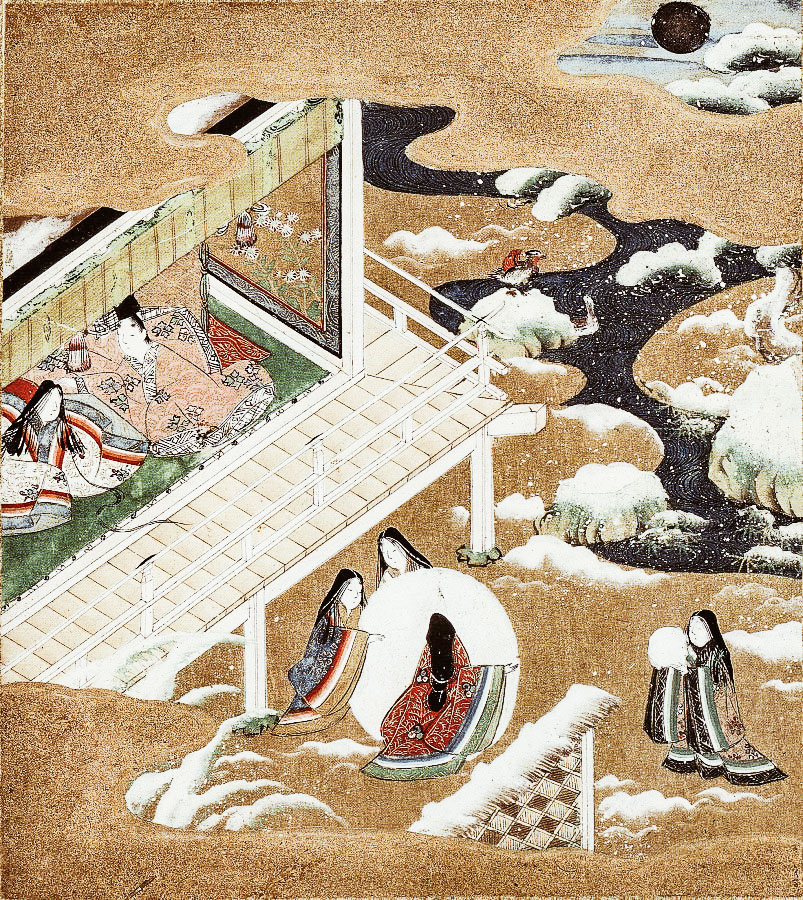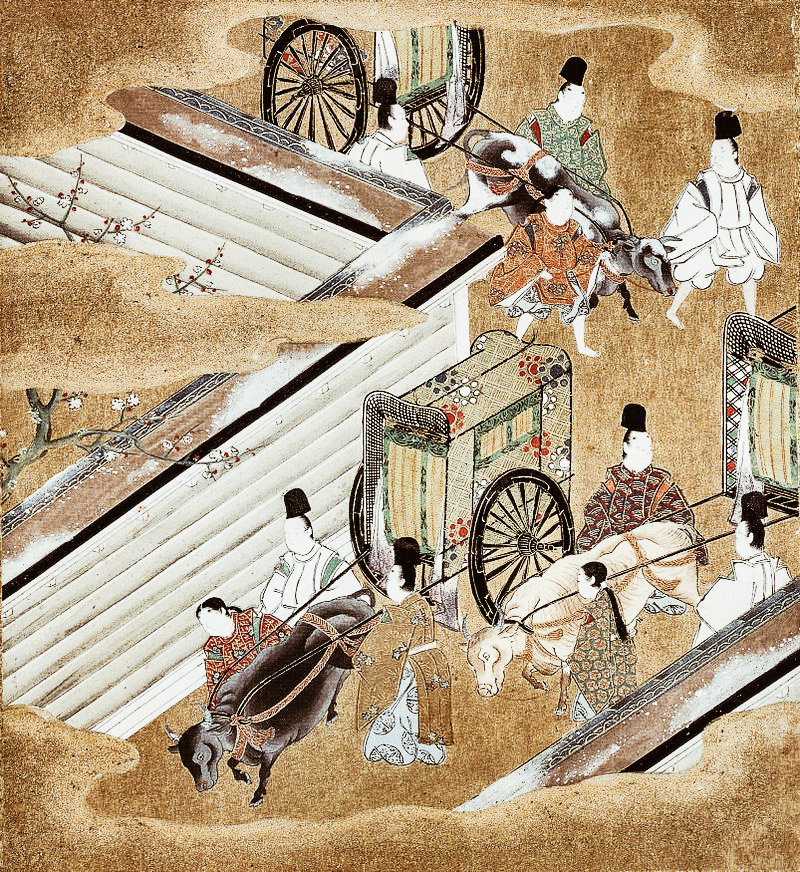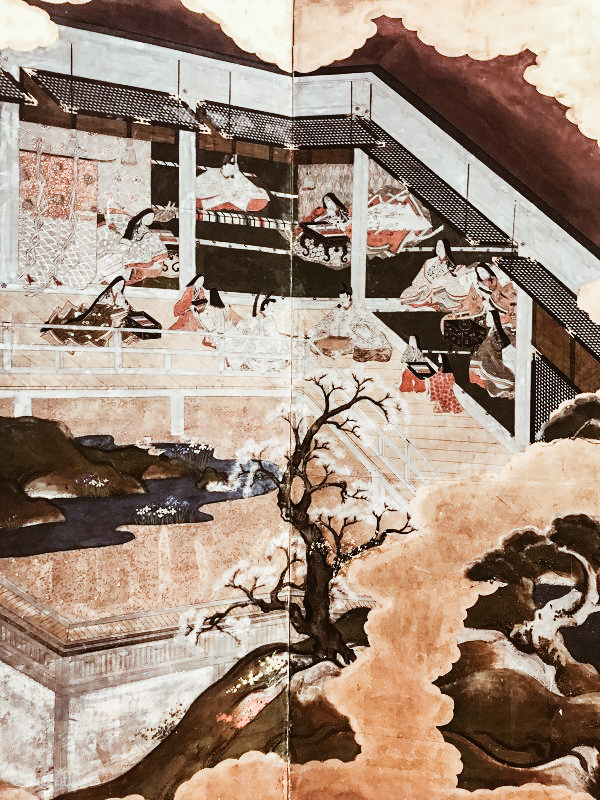Murasaki Shikibu is the name behind the Japanese woman who wrote what is called the world’s first novel, The Genji monogatari (源氏物語 lett. “The Genji Tale”).
Genji’s Tale, The World’s First Novel
Author: SaiKaiAngel | Source: Tokyo Weekender

photo credits: tokyoweekender.com
Every work of contemporary art is the result of centuries of cultural history. In the case of Japanese literature, we are talking about 1,000 years of written prose and poetry. It all began in the Heian period (794-1185) with Murasaki Shikibu, a companion and member of a minor branch of the powerful Fujiwara clan. Murasaki was the author of one of the most important literary works in the world, The Tale of Genji, published in the early 11th century. By way of comparison, it is thought that the first novel in modern European history is Cervantes’ Don Quixote, first published in 1605.
Heian aristocracy
While Shikibu was undoubtedly a pioneer of fiction in Japan, not much is known about her, not even her first name. At that time, the maiden names of elite women were not registered. The name Murasaki Shikibu would have been created based on one of the characters in The Tale of Genji and on his father’s status (Shikibu, which means “Ministry of Ceremonies” in Japanese), although historians still dispute this theory.
Like many women of her status, she lived relatively comfortably, although the aristocratic lifestyle had some restrictions. The elite of the Heian period favoured high education and culture, and often the most powerful individuals were also the most educated.
Men learned everything from poetry and languages to law and politics. Women, on the other hand, were limited to the arts because this was what was considered attractive at the time. Chinese was an important language to know for those directly involved with the court and to participate in literary circles, but women usually could not study it.

photo credits: wikipedia.org
This has not prevented aristocratic women from investing in the creative field, using hiragana and contributing significantly to the genre of the poetic diary. Lady Murasaki’s Diary together with Sei Shonagon’s The Pillow Book are the main representatives of the genre to date.
Through fragments of Shikibu’s diary and narrative work, historians have been able to learn about the unique aristocracy of classical Japan. At the time, poetry and prose were written based on the lives of their authors, but Shikibu’s was distinct from the masses in that it was clearly a work of fiction – although many claim that the stories in The Tale of Genji were inspired by real events.
Genji’s Tale
Genji’s Tale is thought to be the world’s first written work of fiction. It’s not certain whether Shikibu wrote the complex story in a couple of years or decades, but what is certain is that this complete literary work is a portrait of the Heian aristocracy in all its complicated hierarchies.
What is even more impressive is that, despite the long list of characters and appearances throughout the book, the story still surrounds only what at the time was less than 1% of the population, the highest elite.
Reading the chapters gives you a vivid idea of what it was like to be a man or a woman in the Heian period, with the corresponding expectations. The protagonist, Genji, is the archetype of a hero of the period, the perfect man. Son of an ancient emperor, his right to the throne was taken away from him and he was demoted to populan when he changed his name to Morimoto.
The Story of Genji Monogatari
The work tells of one of the sons of the Japanese emperor of the Heian era, known by the name of Genji or rather Hikaru Genji (Genji Splendente). Genji, however, is just a different way to read the kanji of the Minamoto clan (the reading On of Minamoto is in fact 源 Gen, the same kanji present in the word Genji), a family that really existed and to which the author wanted to allude. Born from the emperor’s relationship with one of his concubines, and therefore unable to be part of the main branch of the imperial family or aspire to the throne, Genji is adopted by the court which allows him to climb the high ranks starting from the position of simple court official.
The whole story then revolves around Genji’s love life and his various relationships, thus showing the customs of the court society of the time. Despite his numerous relationships and the different wives he will have during his life, as a libertine Genji still shows his particular loyalty and bond with all the women in his life by not abandoning any of his wives or concubines, especially at a time when for a concubine or wife to be left by her protector meant abandonment of society and marginalization.
Among them, however, one woman was a particular presence in the life of the young Genji: Fujitsubo. The premature death of his mother left in Genji a void that the young man tried to fill throughout his life, always looking for a mother figure in all the women with whom the young man fell in love. He thought he would find the mother figure in Fujitsubo, a concubine of the Emperor, his father.
In the woman, Genji saw not only the sweetness of the mother but also beauty and gentleness, and although he was reciprocated by the woman, the two were forced to repress their feelings because she “belonged”, as concubine and then bride, to the Emperor, and Genji had recently joined the Emperor in marriage with Princess Aoi.
The story continued telling the intertwined stories of all the characters whose lives were intertwined and united until the end of the novel, with the conclusion that saw Genji in old age, reflecting in solitude on the meaning of life and the transience of things and their fleeting beauty. However, there are other chapters, known as Uji’s Chapters, which, like the rest of the work, continue to recount events even after Genji’s death and have as their protagonists Genji’s son and a friend struggling with their love affairs.
However, the story ends abruptly, almost in the middle, leaving the various foreign scholars and authors who have translated the English version to imagine that the work has not been completed by the author. In fact, it seems that Murasaki didn’t plan any end for the novel but simply continued to write it as long as he wanted or could leave it incomplete.
Structure of the Genji Monogatari

photo credits: rugrabbit.com
The story that tells the life of Prince Genji, tells about the young prince’s youth, his rise to success, his worldliness and loves until his fall and then rise again. A plot in which there are bewitching and beautiful female figures as a frame. As for the language, it is very complex and not easy for modern readers: being from the Heian period and moreover in a court environment, Murasaki’s language has a very complex grammar.
Each character is almost never called by name but by their honorary title or according to their class. For women, instead, typical colour of their clothing is indicated, different for each female character, or alludes to a woman using the rank of a male relative of the first order to which she belongs.
Another difficulty of the novel is the presence of poetry and conversations written in verse. This often served the characters to communicate subtle and veiled allusions in a court environment: poetry is classic Tanka poetry. Like most writings of the Heian period, the Genji was most likely written all, or almost all, in kana, and not using Chinese characters as it is written by a woman for a female audience.
It is well known that in the Heian era writing in Chinese characters was something purely masculine, but women were forbidden.
Besides many suggestions of a society dominated by men, the novel was proof of something that could be even more crucial: women had undeniably played a great role in the propagation of the arts. In fact, while the Heian period saw many failed attempts to revolutionize Japanese government policies, what’s left is a rich attachment to the culture that Japanese society still clings to today.
The prose and poems written in hiragana by the women of the court ensured that the lower classes could also enjoy them. In other words, the Heian period is seen as a time when the art world in Japan was born. Not only Shibiku is an important historical figure for its legacy in Eastern and international literature, but she is a symbol of an era in Japan when women were successful in ways never seen before.
Murasaki Shikibu in popular culture
Shikibu is one of the most significant historical figures in East Asian cultural history and, over the next millennia, has remained a staple in Japanese high schools and colleges, just like Shakespeare in Europe and North America.
There have been many important translations and interpretations, as well as a fair amount of criticism. In Japan, Genji’s tale is commemorated on the rare 2,000 yen note and Murasaki Shikibu is the name of the Japanese berry plant.
Like the story of the 47 ronin, Genji’s Tale has been adapted for the big screen several times, and the latest is the feature film Genji monogatari: Sennen no nazo (2011). In recent years, Murasaki Shikibu herself has appeared in mobile games such as Fate/Grand Order and Monster Strike, where the characters are inspired by her work.
Share this:
- Click to share on Facebook (Opens in new window)
- Click to share on Twitter (Opens in new window)
- Click to share on Tumblr (Opens in new window)
- Click to share on Pinterest (Opens in new window)
- Click to share on Telegram (Opens in new window)
- Click to share on WhatsApp (Opens in new window)
- Click to share on Reddit (Opens in new window)
- Click to print (Opens in new window)






